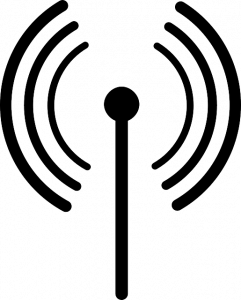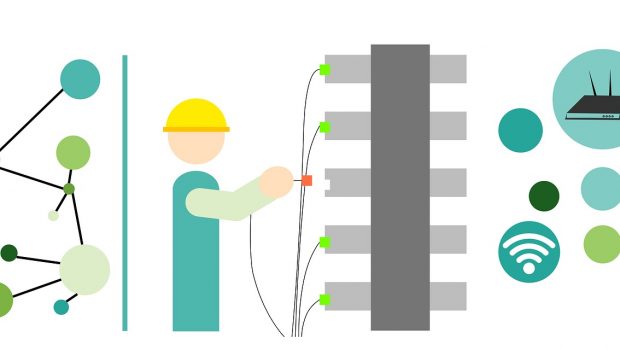A Brief History of the Wireless Router and its Technology
It is hard to put a finger to any one person or group with regard to the invention of the wireless router and the WiFi transmission standard.
Since these technologies have become an important part of everyday lives, most users take them for granted and rarely wonder how they work or when they first began. In fact, some people mistake WiFi for the Internet, when the two have a lot of differences between them.
Wireless routers are much like physical computer routers, only without the wires. Computer routers existed since the early days of the Internet, even though many people think it’s a newer technology. Without a router, the Internet simply couldn’t exist. The simplest definition of a router is a device that connects different computer networks together.
A router is also capable of connecting a computer to multiple networks. These days there are various examples of routers found everywhere. For instance, an Internet router at home connects all the computers in the house to the Internet. Businesses use big, complex routers to create and connect to several networks. Some more powerful routers are used for gaming at home.
Never has gaming ever been so fun. There are multiple ways to game nowadays, you could either game on a PC or even now mobile device. With so many ways of gaming you must ask yourself what is the best game to play for either device? We could mention slot games like Immortal Romance, Mega Moolah and Game of Thrones. Each of these games have one thing in common: with just $1 you could win big! It doesn’t seem possible that with just a $€1 deposit, an online casino will give you free spins, but it’s possible and $1 deposit casino.
A traditional router is a wired device, but a wireless router does the job without getting tangled in wires and cables. In many ways, a wireless router is a mini radio-signal receiver that transmits packets of data. This data is received by the radio receiver built in your computer or mobile device and decoded to display the data on the screen.
What is WiFi?
When talking about wireless routers, how can WiFi be far behind? WiFi is so commonplace these days, with coffee shops, supermarkets, and restaurants turning into WiFi hotspots. The Internet is almost omnipresent which is outstanding. Have you ever wondered how it works or when it began?

WiFi is mistakenly dubbed as wireless fidelity by a lot of people. There is no evidence to prove that WiFi is short for wireless fidelity. There are many different stories surrounding the origin of the name. One story says that in the early days of WiFi, to spread public awareness about the new technology, the tagline “The Standard for Wireless Fidelity” was used by the Alliance.
The term quickly stuck and propagated. In reality, the term WiFi has no meaning. The Alliance chose the term because it rhymes with hi-fi (hi-fi pertains to sound and reproducing music or sound with high fidelity or quality) and they hoped it would make the term more relatable for the public.
History of WiFi
The 802.11 wireless-transmission signal-and-receiver protocol standard was first developed by the IEEE (Institute of Electrical and Electronics Engineers).
This standard was modified by the WiFi Alliance in the 90s to create what is now known as the WiFi standard. It basically refers to the protocol of radio signals and receivers through which wireless Internet transmissions are sent and received. It is through the 802.11 spectrum that the radio waves are transmitted over.
Computer scientists Bob Kahn and Vint Cerf are credited with inventing the Transmission Control Protocol and the Internet Protocol, on which the Internet is based. And no, Al Gore did not invent the Internet!
Although Kahn and Cerf have a big role to play in the making of Wifi, it is Vic Hayes who is often called “The Father of WiFi.” As the chief of the IEEE, Hayes played a pivotal role in modifying the 802.11 standard. The modifications made by Hayes play a huge role in the WiFi technology even to this day.
Another group of people – Dr. John O’Sullivan, Mr. Diet Ostry, Dr. Terry Percival, Mr. Graham Daniels, and Mr. John Deane – also have some credit in developing the WiFi network. Back in the 90s, they were working for the Commonwealth Scientific and Industrial Research Organization (CSIRO) of Australia on the development of a computer chip that would enhance the quality of the WiFi signal.
This technology not only revolutionized the WiFi signal, but also influences every WiFi wireless router even to this day.
Wireless routers send the binary signal provided by the Internet service provider through the airwaves straight to a compatible device. A router creates individual IP addresses for each new device on the network. The modern router is much more advanced than the earlier versions.
Today’s modern routers are capable of splitting one Internet signal in multiple directions, while also offering users a number of other features like firewalls and parental controls. With these features, users can control and monitor the traffic that flows from the modem to the router and to the computer.
Wireless routers also use a system called “Wi-Fi Protected Access” to protect your connection from external threats trying to hack into your network or steal your bandwidth. When setting up a new router, users must always choose the WPA2-PSK protection because it is the strongest and most secure.
The road ahead
The 802.11ad routers are soon to be here, and with fiber optic lines being laid in several places, wireless routers are only getting more powerful kind of like the Transformers movies but this is another topic. Whether you use your router to stream Netflix content or watch YouTube videos, with more advanced wireless routers, you will be able to stream content at a faster speed and the highest quality.
This also means that with ongoing developments and refinements to the WiFi system, you will be able to access the Internet faster from anywhere, no matter how remote the place.
Wireless routers are constantly evolving. Over the years, they have undergone numerous changes to keep up with the changing content and transmission speed. Although the technology came about more than forty years ago, it has kept evolving to meet changing demands.
Today, when you can easily access the Internet sitting at a coffee shop, at the airport, Taco Bell, or a supermarket, take a moment to thank the above people for their dedication and contribution in developing a technology that now benefits millions of users around the world. Innovation at its finest!
Author bio:
This is a guest contribution by James Agar, a self-confessed ‘Tech Geek’ and the chief editor at DontBreakThe.net, a Technology website dedicated to providing easy-to-digest information and How-To Guides to make the tech world a better place.
Image source: pixabay.com

















